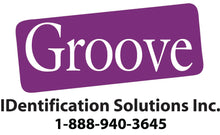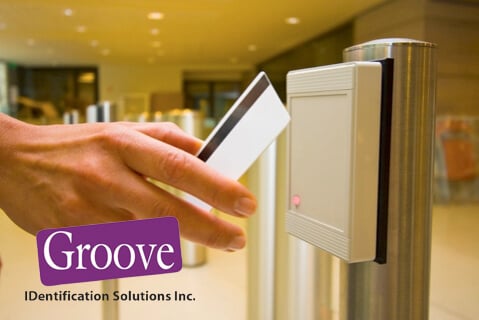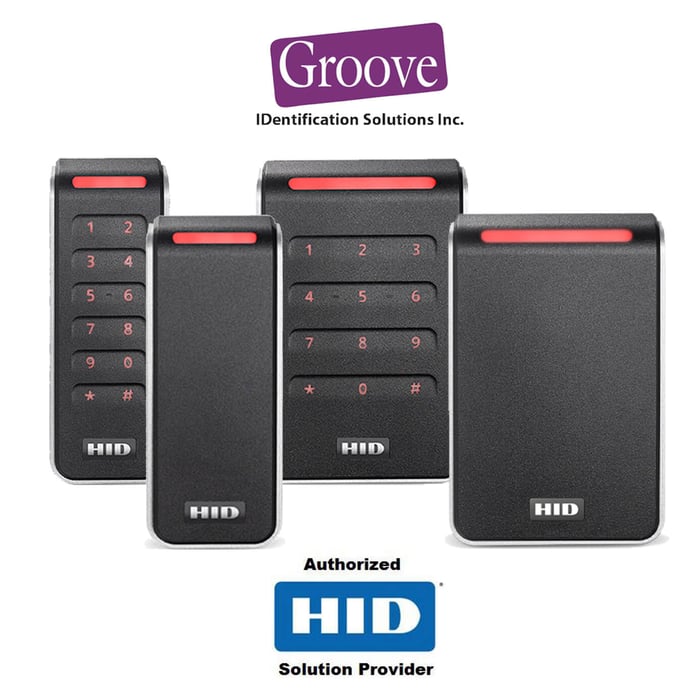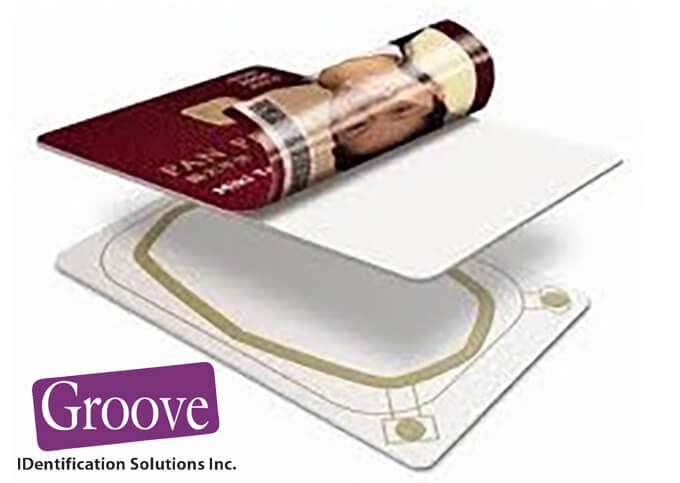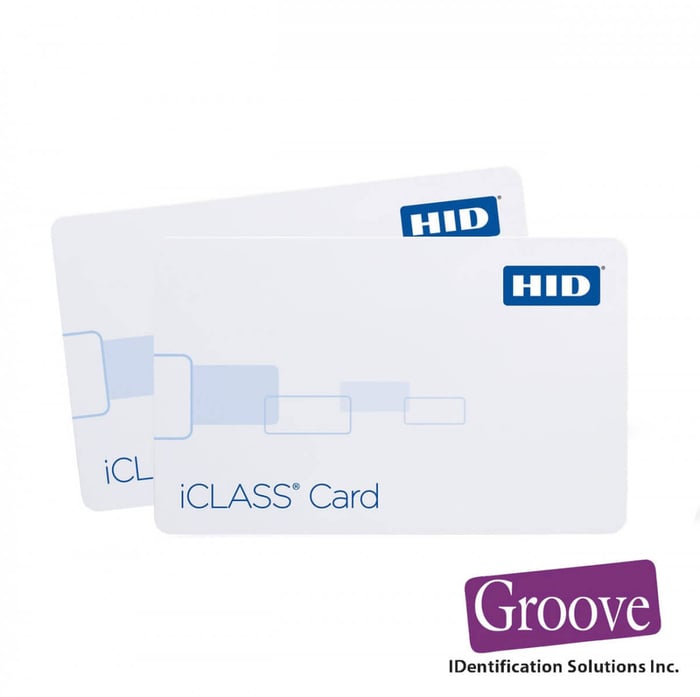Will These Cards Work with My Reader?
Proximity Card Identification Solutions have become increasingly sophisticated and versatile. New technology has provided security professionals with features and functionality that would astonish their predecessors.
Still, some challenges go along with these innovations. One potential snag is having to learn which cards are compatible with which card readers. Nobody wants to order a shipment of ID cards only to find out that they can't use them at their facility.
Here at Groove, many of our compatibility questions are about proximity cards. They're less familiar to many customers. Since they involve a more considerable investment than conventional magnetic stripe badges, reordering them can be stressful.
To understand which proximity cards to order, it helps to know how they work. Manufacturers call them proximity cards because, unlike magnetic stripe cards, users don't have to insert them into a reader.

Instead, the cardholder holds the card near the reader, which detects a number encoded in the badge. The reader will beep or flash a light to indicate that it has verified the card and permitted access to the cardholder.
The reader does this verification using radio frequencies. Early proximity card designs use a standard radio frequency of 125 Khz. The reader and the card both have to support this frequency to work together.
These 125 Khz proximity cards are the most common type of contactless card technology. However, there is a more advanced generation of contactless tags that manufacturers call smart cards. They use a much higher standard frequency of 13.56 Mhz.
Frequencies and formats are where most of the confusion comes in for security professionals still getting the hang of contactless identification. How can they be sure that the card and the reader can talk to each other?
Here are some simple guidelines to help you work out whether the cards you're considering and your readers can work together.

Frequency Matters
As you'll have gathered by now, frequency matters. So, you should make a point of learning the specifications of each card reader at your facility.
Some card readers can read both standard frequencies, i.e. 125KHz for proximity cards and 13.56 MHz for contactless cards. Others support only one card type or the other.
In addition to having a frequency, smart cards also have a data format. The format is some additional code that puts the card number in context for the reader. The most common standard for the formatting is 26-bit.
The data format for a 125Khz proximity card is the same for a 16-bit smart card format, so that's relatively standard. It gets trickier when we look at readers programmed for other data formats.
Why do we have other formats? Well, the 26-bit format has a limitation. It can't guarantee that the system won't have duplicate security numbers. Duplication isn't a deal-breaker for many installations. Still, for applications where it's problematic, a proprietary format is available that can keep every number unique.
The proprietary format uses 37 bits. Readers built for 26-bit formats usually won't recognize the longer 37-bit format. Here at Groove Identification we can help find a compatible card format so you don’t have to spend more than you need to on your Proprietary Access Cards.
Know Each of Your Readers' Specifications
As we mentioned, the best practice for security professionals is to know each of your readers' specifications. That's not always feasible. Maybe your predecessors didn't note those specifications, or it's not convenient to inspect them or track down the documentation.
You can keep it simple by always reordering the same proximity cards with the same configuration. You can usually find this information on the packaging material from your last shipment of cards.
Of course, our team at Groove Identification Solutions is always available to support you. We can work with you to determine the optimal card supply choice to meet your needs. We're happy to review your options and explain why some cards go with your reader while others don't.
If you're planning on implementing an ID-card system or have one in place, we'd love to hear about your compatibility experiences or answer any questions you may have.
